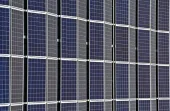The biggest surprise to emerge from the Chinese earthquake may be Dongfang Electric Corp.
China's second-biggest power-plant builder fell 27 percent to a 16-month low after the 7.9-magnitude quake in Sichuan province on May 12 flattened a Dongfang factory and killed 500 of its workers. Since the disaster, the company has received 10 billion yuan ($1.45 billion) of new contracts for wind turbines and other generation equipment, investor-relations manager Liu Zhi said.
The orders, which are running at twice last year's monthly pace, may help revive the company's shares. Dongfang has underperformed the CSI 300 Index, tracking 300 stocks traded in Shanghai and Shenzhen, by 16 percentage points since the quake. It has lagged behind the Hang Seng China Enterprises Index in Hong Kong, where the company also is listed, by 11 points.
With the Chinese government planning an increase in alternative-energy use, Dongfang's wind-turbine earnings will increase eightfold by 2009, said Michael Zhang, an analyst with BNP Paribas in Hong Kong who rates the stock ``buy.'' The unit accounted for about 2 percent of revenue in 2007, its first year of operation, and posted a profit of 45.5 million yuan, according to the company's annual report. That's about 1 percent of total profit from Dongfang's equipment-manufacturing businesses.
``Dongfang's wind-power business will only start contributing significantly to earnings this year, so it's not fully reflected in the stock valuation,'' said Zhang, who covers Chinese machinery makers. ``Most of the analysts on the street haven't realized how big the wind power business is for Dongfang.''
Demand Surge
Wind-power demand is surging as the government turns to alternative-energy sources to help drive an economy that expanded 10.6 percent last quarter.
Chinese wind-equipment purchases total 30 billion yuan annually, making the country the world's fastest-growing market after the U.S., said Dave Dai, a Hong Kong-based analyst at CLSA Asia-Pacific Markets. Domestically assembled gear costs 20 percent to 30 percent less than machinery from Siemens AG and General Electric Co., said Dai, who doesn't cover Dongfang.
Cheapest
Dongfang trades at 7.8 times estimated 2008 earnings, making it the cheapest of three mainland power-equipment makers listed in Hong Kong. Shanghai Electric Group Co., the country's biggest, is almost twice as expensive, while No. 3 Harbin Power Equipment Co.'s valuation is 28 percent higher than Dongfang's.
Five analysts rate Dongfang ``buy,'' four say hold and two advise selling, according to data compiled by Bloomberg.
Dongfang's Hong Kong-traded shares rose 6.4 percent, the most in almost three weeks and triple the daily gain in the Hang Seng China Enterprises, to close at HK$25 today. The Shanghai- traded shares advanced 5.6 percent, the most in more than three weeks.
Dongfang's damaged factory made steam turbines, the company's most profitable item, and it will take as long as two years to reopen.
Jan Wim Derks, an economist and head of the global emerging- markets team overseeing about $2 billion for ING Investment Management in The Hague, sold his Dongfang shares out of concern the earthquake damage may cause the company to lose business.
``They have to focus on rebuilding their facilities rather than on the market, so they may lose some focus in the near term,'' Derks said. ``For now, I prefer to be on the sidelines.''
Wind Power
China, the world's biggest energy consumer after the U.S., forecasts wind-power capacity will reach 20 gigawatts by 2010, double the previous government target, according Wu Guihui, deputy head of energy at the National Development and Reform Commission. The amount is equivalent to about 3 percent of the country's total power-generating capacity in 2007.
``Wind farms are ordering a lot of equipment, which is keeping the manufacturers busy,'' said Maggie Lee, lead manager for Invesco Hong Kong Ltd.'s $4.6 billion Asia Infrastructure Fund. Her firm owns 11 percent of Dongfang's shares, Bloomberg data show.
Adding wind-energy capacity is cheaper than other alternative forms such as hydroelectric, solar or nuclear, Lee said. The country plans to spend 1.5 trillion yuan on renewable power over 15 years to reduce dependence on fossil fuels and cut pollution.
China will rebate taxes paid by domestic companies on imports of parts and materials used to make larger wind-power equipment, according to a statement on the Customs General Administration Web site.
Dongfang's share of China's wind-power market, currently at about 5 percent, will triple by as early as 2009 as it catches up with market leader Xinjiang Goldwind Science & Technology Co., BNP's Zhang said.
Prices that undercut overseas rivals will help Chinese producers hold onto the market, Dai of CLSA said. Denmark's Vestas Wind Systems A/S, the world's largest wind-turbine maker, saw its global market share fall to 23 percent last year from 28 percent in 2006.



















 Advertise
Advertise






